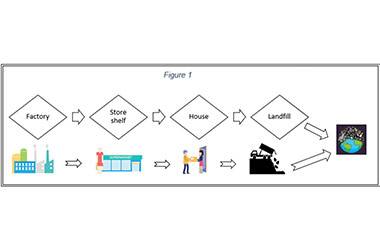Business Students should Learn about Cradle to Cradle Principles

Culture of Producing Products that Become Obsolete, like Smartphones, should be Stopped
Do you know what the “cradle to cradle” (C2C) business concept is? What do you, as IBA or MBA students, need to know about this concept?
The term C2C was coined by an American architect, William McDonough and a German chemist, Michael Braungart in 2002, through their book “Cradle to Cradle: Remaking the Way We Make Things”. In the book, the authors demonstrated that integrating cradle to cradle into the business strategy can lead to enduring benefits for society and prevent waste.
In simple terms, a cradle-to-cradle product goes through a cycle and is in line with the Circular Economy. A cradle-to-cradle product is made in a way that does not contain toxins nor does it pollute the environment. What customers receive is a high-quality product that can be either directly composted or returned after use so that the manufacturer can continue to use the waste products as raw materials for new products. Although it has many limitations and is difficult to implement, C2C has many advantages. Within the sustainability world, C2C is often cited as the ultimate solution to sustainability issues. But how did it come about?

Smartphone, laptop and software manufacturers have always had the business policy of annually inventing new style of their phones or laptops, be it software of hardware. Same with automobile and equipment manufacturers. This practice is what Waldman (1993) called ‘planned obsolescence’. This simply means that businesses purposely produce products that will become obsolete fast so that businesses can continue, and new ones can be manufactured to replace the old, obsolete ones. Without these, sales will dwindle, and businesses will shut down within a few years.
Let’s take the example of Levi’s jeans. Back in the 1980s, these jeans were made of sturdier denim and, although they were expensive, they lasted longer. In today’s world, in what we call fast fashion, clothes are made in the less developed countries and are cheaper and lower in quality. It is purposely done that way by the respective brands. Just like fast food, fast fashion is dangerous and is the root of all the sustainability problems that we are facing now.
We can find a similar trajectory with most consumer products over the last two decades. At one time, long ago, when we valued quality and durability when we bought goods, Walmart and many low-cost manufacturers began brainwashing us to look at price only. Such practice accelerated the flow of products from factory to store shelf to house to landfill (Figure 1). No wonder there is more waste than we can remove.

The thing is, we have taken for granted our natural environment and have taken things too lightly. As dismal as it is, much of the resources extracted from nature are utilised in unsustainable activities and often land up as waste in landfills or cause irreversible atmospherical damage. This is what we call ‘cradle-to-grave’ scenario. If we ignored the threats that are abundant around us, we would undeniably deplete our natural resources in a few decades or destroy the sustainability of this planet for our survival. At the rate we are going now, scientists say that we are currently using up the renewable resources of 1.7 earths, and unless things change, we would need three earths by 2050.
Some politicians and businessmen believe that all these climate change issues are just hype and that nature will take care and rehabilitate itself. They claim that we are already doing pollution control and treatment, and we are already undertaking all kinds of environmental protection procedures, so there is nothing else that we can do. The thing is, these environmental protection procedures by themselves are costly, time-consuming and waste lots of labour and effort, which could be channelled to better economic activities and industrial or technological developments. Improper handling of waste can even result in dangerous effects of life and habitat, which is happening now already where rich countries dump their waste in poor countries. And now, the poor countries are protesting and sending back the waste as they cannot keep up with the volume.
C2C is said to solve this problem of planned obsolescence, that is to educate and encourage manufacturers to design their products in such a way that they can be reused and remanufactured. The idea of planned obsolescence should be viewed with caution. It is not only caused by the greediness of companies who want to boost sales, but is also the result of the ravenous, consumer culture. Consumers often want new things with new functions or different designs. Businesses are just giving people what they desire. Thus, some experts believe strongly that to address sustainability issues truly, we need to first educate consumers to tame their desires and encourage them to lead a more moderate life so that we can stop utilising our already depleting natural resources.
WUP 24/2/2020
by Hanna Abdelwahab
©WUAS Press